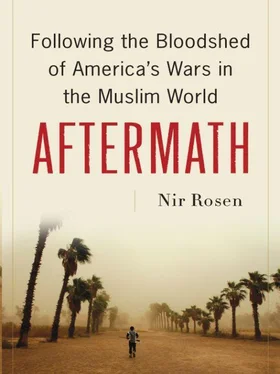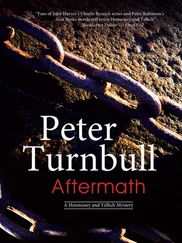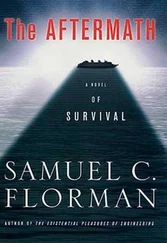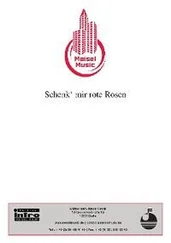Some Shiite activists in exile circles belonging to Dawa and the Supreme Council began talking about the historical unfairness Iraqi Shiites faced. Abdel Karim al-Uzri was a secular Shiite and the godfather of this idea. He argued that Shiites had been treated unfairly ever since the state of Iraq was established. Uzri and a few others outside the mainstream of Dawa and the Supreme Council began talking about the political bias against Shiites. Dawa and Supreme Council rhetoric was about Islamic revolution, though. People like Sami al-Askari and Muafaq al-Rubaei, who would rise to power in postwar Iraq, were staunchly against talking about Shiite rights. “I was accused of being a foreign agent to undermine them,” said the Dawa insider. “It was about Islamists against evil powers of everybody else. It was about Islamic revolution, not Sunnis versus Shiites. At one point the Supreme Council even had Sunnis in its leadership.” But even this insider admitted Saddam was not sectarian. “Saddam played one community against another. He executed many Salafis and influential Sunnis. Saddam wasn’t a Sunni. He didn’t care about Sunnis and Shiites. After the 1991 failed uprising, there was a strategic shift in the Supreme Council. It wasn’t about Samarra; it was a strategic plan to destroy Sunni power.” After the Gulf War the Iraqi state became much more narrowly based. Shiites were removed from jobs, or kept out of jobs, while power became more and more concentrated in the hands of Sunnis from certain tribes. The regime responded to the threat from the uprising by closing ranks on a tribal and clan basis, mostly people from Tikrit and Mosul. To many Shiites, it felt like the state religion was Sunni Islam, and the public practice of Shiism was prohibited. At Saddam University, one of Baghdad’s biggest schools, the senior party official who had taught Baathist ideology just before the war told his students that if he found them visiting Shiite shrines, he would beat them. Naturally, he also condemned the Dawa Party—the party of the largely exiled Shiite intelligentsia—and described it as murderous.
State schools had mandatory religion classes, but only Sunni Islam was taught and the teachers were usually Sunni, at least in Baghdad. The religious endowment, or waqf, was an ostensibly ecumenical ministry, but many Shiites perceived it as being Sunni. They worried that collection money donated to Shiite shrines was used to build Sunni mosques. Shiite calls to prayer from mosques were often not allowed. When mosques challenged the government and broadcasted the Shiite call, they were punished. Many Shiite religious books were banned, perhaps because some of them condemned figures revered by Sunnis, so Shiites would exchange these books secretly. Sometimes Shiites found with them would be accused of belonging to the Dawa Party and executed. Between Iraqis, the level of social sectarianism often depended on whether or not they were devout practitioners of their faith.
Saddam’s faith campaign of 1993 was meant to bolster his legitimacy. It meant that Baath Party members had to attend classes on Islam. This would influence not only them but their sons as well, who ten years later would take part in the resistance. The generation raised in the 1990s also had much more Islamic education in school. The regime even introduced an Islamic-based mutilation as punishment for military desertion.
Many upscale whites living on Park Avenue in New York view blacks and Hispanics with disdain. Many minorities resent whites. Even in New York City one can hear blacks referred to as “niggers” and Chinese as “chinks.” But this racism does not normally translate into violence. It takes more than just resentment or even hatred. It takes fear as well as mobilization and manipulation by politicians and the media. This happened in the Balkans and Rwanda, and this happened in Iraq as well. For sure, the potential was there to be manipulated. In 2003 Shiites referred to other Shiites as “ min jamaatna ,” or “from our group,” to let somebody know that a stranger could be trusted. But the American occupation divided Iraqis against one another, pitting the winners against the losers, and persistent Al Qaeda-style attacks against Shiites combined with this manipulation to unleash an awful tempest. The occupation empowered sectarian, ethnic, and tribal parties that had no rivals thanks to Saddam’s legacy.
The Americans, much like the exile Shiite and Kurdish parties, identified the former regime and its security forces with Sunni Arabs. Most Iraqis viewed the army as the national army, not Saddam’s army or the Baath Party’s army, even if they viewed the Republican Guard as having a more sectarian hue. But despite the national embrace of the army, it was Sunnis who suffered the most and felt most vulnerable following its dissolution. Nearly four hundred thousand men lost their jobs following Bremer’s decision to disband the army and security forces. Shiites and Sunnis alike protested. The resistance would later benefit both from the chaos resulting from the dissolution of the security forces and from the pool of unemployed and embittered men it created. As Sunnis saw exile sectarian and ethnic parties taking over, their sense of disenfranchisement only increased—especially when the new government and its security forces became dominated by those same Shiite and Kurdish parties.
Bremer’s de-Baathification order led to the sweeping dismissal of Iraq’s entire managerial class. De-Baathification was not a neutral judicial process; it was politicized from the beginning. Former American ally Ahmad Chalabi used the process to target opponents. Shiite ex-Baathists were rehabilitated, but Sunnis often were not. In effect, the state was de-Sunnified. The American-selected Iraqi Governing Council (IGC) was dominated by sectarian and ethnic exile parties that had little support within Iraq, and its Sunni members were especially weak. The Sadrists, who had real indigenous support and had not been in exile, were excluded, while Dawa and the Supreme Council for the Islamic Revolution in Iraq, perceived to be Iranian tools, were empowered. Crucially, this was the first time sect and ethnicity had been used as the official principles underlying politics and institutional formation. Although the IGC was weak and had little support, it wrote the interim Constitution. In June 2004 the IGC was replaced by the interim government, led by secular Shiite and former Baathist Ayad Allawi. The exile sectarian and ethnic parties remained dominant. Many Shiites reported that violence against them started with the formation of the “Shiite”-controlled government.
As the resistance adopted a more Sunni identity, the Americans, who already viewed Sunni Arabs as pro-Saddam and pro-Baathist, had their preconceived notions reinforced. The U.S. military’s brutal attempts to suppress the resistance also reinforced the Sunni sense of persecution, and there were no prominent Sunni leaders who could act as intermediaries between the resistance and the Americans.
The January 2005 elections were based on proportional representation, with all of Iraq as one electoral district. This weakened local parties with grassroots support but strengthened countrywide ethnic and sectarian blocs. Sunnis boycotted, strengthening the hands of Shiite and Kurdish parties. Sunnis were then locked out of the constitutional drafting committee. They feared that the federalism in the new constitution would deny them access to the country’s resources and wealth. In October of that year Kurds and Shiites voted for the Constitution in a referendum, while Sunnis overwhelmingly voted against it.
While it was once taboo to ask about somebody’s sect, it now became an essential part of daily interactions, with people asking indirect questions about where somebody was from, what neighborhood, what tribe, until they could figure it out. Many Sunnis, of course, also had a condescending and suspicious view of Shiites, encouraged by Saddam’s policies in the 1990s. To them, and to many Sunnis in the region, the new Shiite-dominated order was a shocking historic reversal. Iraqi Sunnis feared revenge, especially as they saw that Shiite-dominated security forces were indeed targeting them en masse. By 2005 mass-casualty attacks on Shiite civilians were widespread. Shiites were restrained in response to these attacks, thanks in large measure to their leadership. Following the January 2005 elections, things began to change. The Supreme Council took over the Interior Ministry, and its men from the Badr militia filled senior positions. That year Sunnis began to be killed during curfew hours, when civilians could not drive. The killers reportedly had official vehicles. Missing Sunnis would be found executed with signs of torture.
Читать дальше











